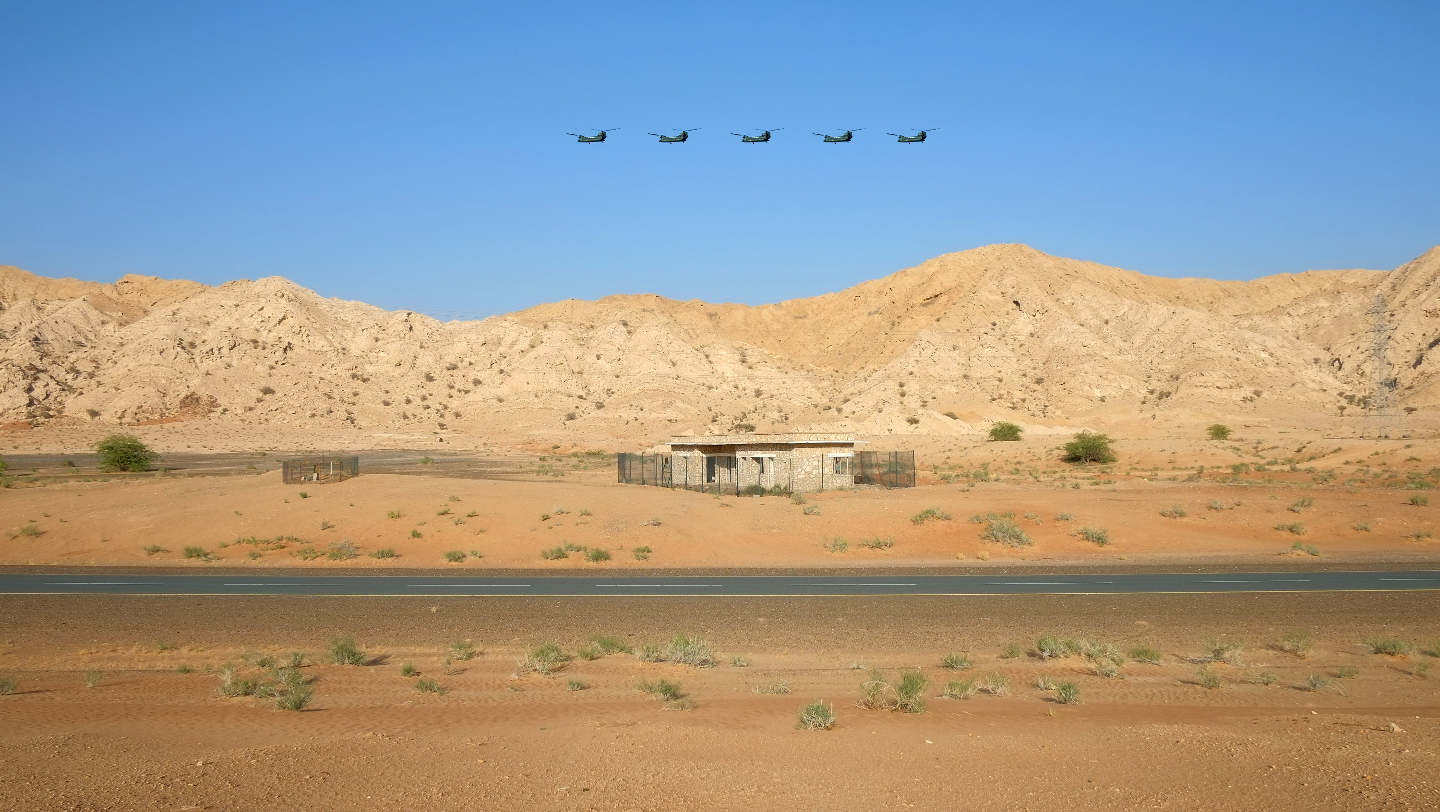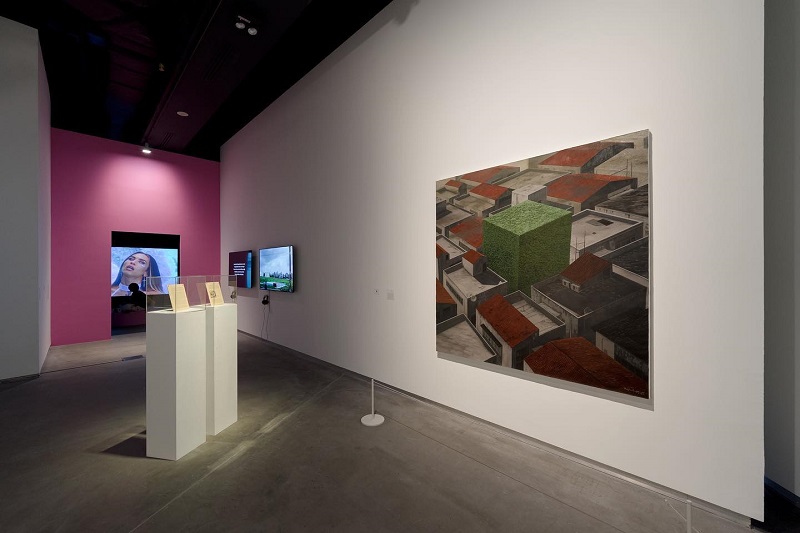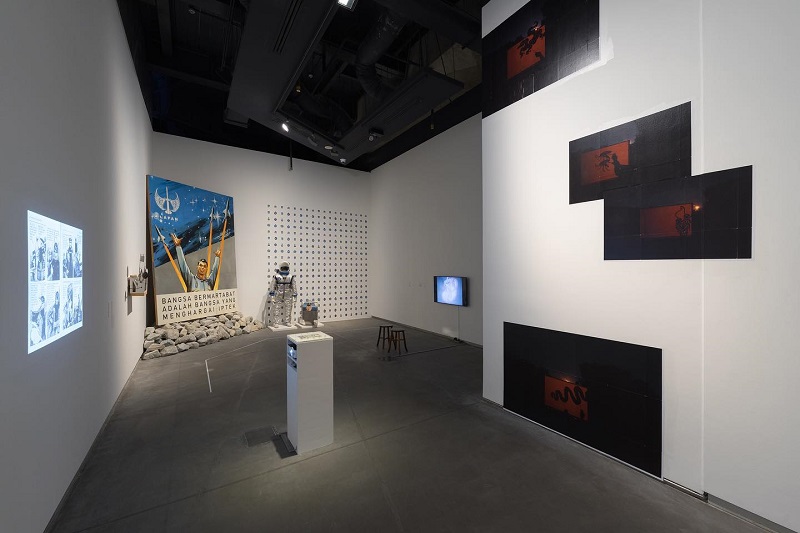
'Straight Line Above Oil Well' by Wimo Ambala Bayang (All photos: Ilham Gallery)
It was based on Patrick Flores’ hugely successful art talk some years back at Ilham Gallery that inspired gallery director Rahel Joseph to contact the renowned Filipino curator, critic and scholar for a new collaboration. Ilham’s new exhibition, Dream of the Day, is Flores’ idea based on a poetic manifesto by fellow Filipino David Medalla, an artist who rose to fame in the 1960s for his long-lasting influence on the global contemporary art scene.
Medalla’s work — as well as those of 38 other artists from the Philippines, Indonesia, Thailand, Sri Lanka, Singapore, Vietnam, Myanmar, Egypt and Malaysia — is included in this unusual exhibition, which explores a range of media, genres and sensibilities, from surrealism, slow cinema and trans-performance to queer photography and feminist paintings. “We tend to focus on Asean a lot, leaving out nations in the region with which we have a relationship. Sri Lanka is a good example,” says Joseph. “Flores has looked beyond Southeast Asian borders for this exhibition, choosing instead to include art that applies to the idea he had in mind for Dream of the Day.”
Medalla, who died in 2020, was a defining force of the art movement in the Philippines. “His imagination brought to life machines, auto-kinetic sculptures that created careful columns of clouds made of soap bubbles, calligraphy out of sand and ink landscapes out of mud,” Flores wrote in his CNN eulogy.
“For me, more than his works, Medalla was a pioneer of a sensibility about art that is keen on provocation and discerns the vulnerabilities of making to process and participation, to context and even climate. Because Medalla’s works allowed themselves to be affected by all these things, they are rendered sensitive, alive.”
dream_of_the_day.jpg

Aficionados who aren’t trained art scholars may not quite appreciate the significance of Medalla’s body of work, but that doesn’t seem to matter when you consider the manner in which Flores interprets the 1965 manifesto in question — the text for which is helpfully included in Ilham’s exhibition — and the way the exhibition celebrates the artist and his activism. For this reason, Dream of the Day certainly doesn’t make for casual viewing. This is a rather cerebral showcase that we recommend spending a good amount of time perusing to properly understand.
“I have always been fascinated with this manifesto for both its playfulness and urgency. For me, it is the quintessence of a future imagination, one that is so presently potent that its fulfilment seems to happen uneventfully at the moment of reading the text,” Flores tells Options. “In conceiving an exhibition about the project to change certain existing realities that we think are not right, this manifesto offers what we can call a serious game of chance. Exhibitions are always about risks, and Medalla proposes both a poetics and a politics of chance. The title, which is lifted from the manifesto, can be read as a condition of aspiration, the dream of the day. When it shifts to the imperative mood, it is a call to action, inspiring us to dream of the day when things go our way.”
The exhibition puts its faith in disbelief and speculation, exploring how modern and contemporary art from Southeast Asia, by seeing through sensible forms, is able to examine and interpret the realities of everyday life through the use of visual imagery that goes beyond the conventional and familiar. In doing so, Dream of the Day proposes the possibility of different forms of intelligence and instinct that may be more responsive to a wider range of life forms that exist in a vast inter-species, transgenic world.
ilham_dream_of_the_day.jpg

Flores has split the exhibition into nine broad sections, each tackling different aspects of his interpretation of Medalla’s manifesto. The supernatural is a major element in the works he has chosen, owing to the role it plays in our community — myths and monsters are far from foreign to various cultures in Asia.
Flores agrees, saying, “The Southeast Asian lifeworld is animated by spirits. There is no rigid wedge between the material and immaterial worlds. Yes, folklore was an important layer in the curatorial discourse, leading me to work with artists who had an inter-species imagination and who acknowledged the fact that the world is too important to be left to human beings. Dreams and realities mingle with myths and fantasies. Things have lives in the same way that Medalla dreams of sculptures breathing. The idea of normal or natural is not separate from the idea of the otherworldly and the impossible.”
When touring the exhibition, our advice would be to somewhat disregard Medalla’s manifesto and consider the artwork on a more basal level — they are alternately poetic and provocative, like good art should be. What also struck us is the painstaking effort that went into assembling an exhibition of this scale. The artwork had to be sourced from private collectors and museums around the region, giving viewers a chance to see pieces that may not ordinarily reach local shores.
Indeed, that is Flores’ biggest takeaway as a curator — the capacity of the region’s artmakers. “The geography of Southeast Asia is lush. It’s a rainforest or an archipelago of compelling realities and dreams. That dreaming of change requires a revisit to notions of reality and the various cosmologies that sustain it. That young artists envision change in the urgent wonders of everyday life and that they intertwine waking reality with the irresistible fictions and folklores of the future.”
'Dream of the Day' runs until May 14, 2023, at Ilham Gallery, Menara Ilham, Jalan Binjai, Kuala Lumpur. Opening hours are 11am to 7pm (Tues to Sat) and 11am to 5pm (Sun). See here for more info.
This article first appeared on Dec 5, 2022 in The Edge Malaysia.


